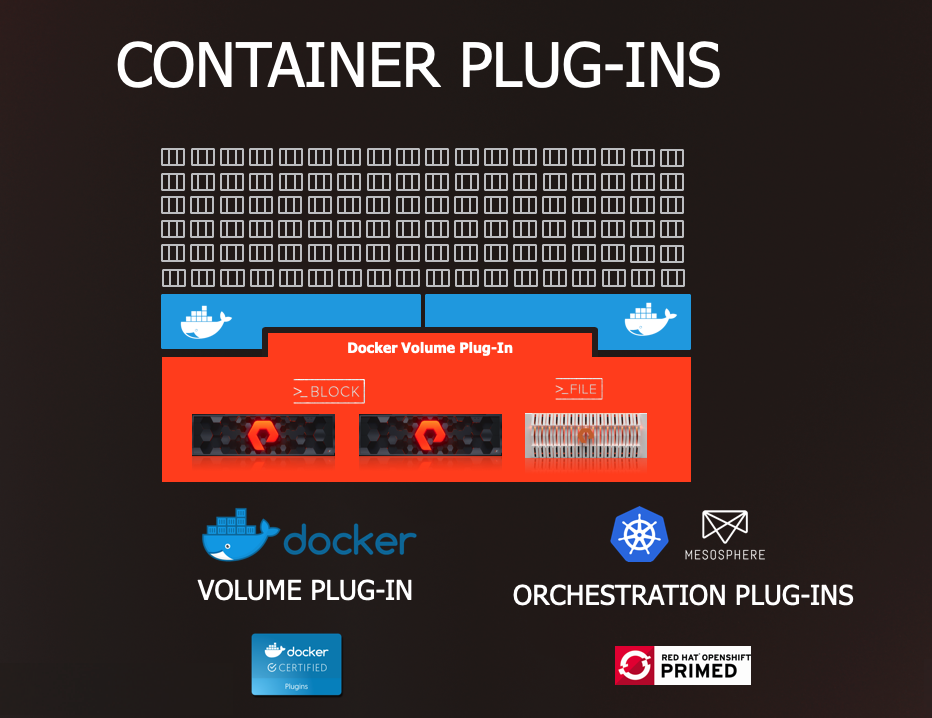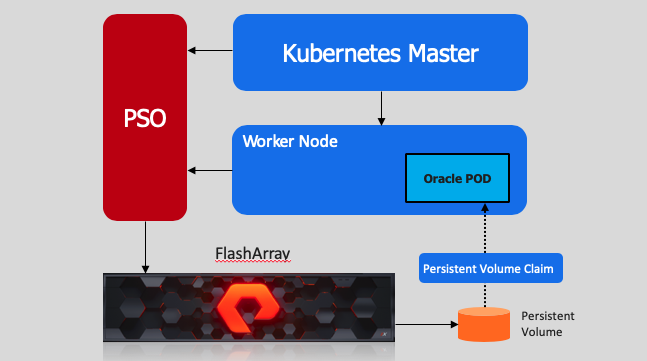Persistent NFS volumes with Kubernetes
Persistent Volumes in Kubernetes
In this example we will create a persistent Volume, followed by a persistent volume claim, then create an nginx pod that will mount the volume we created
As this is my home environment, I have an Ubuntu server sharing and NFS filesystem over running on ZFS
Check for PV
kubectl get pv
No resources found in default namespace.
Check for PVC
kubectl get pvc
No resources found in default namespace.
- Create the yaml file
apiVersion: v1
kind: PersistentVolume
metadata:
name: pv-nfs1
labels:
type: local
spec:
storageClassName: manual
capacity:
storage: 5Gi
accessModes:
- ReadWriteMany
nfs:
server: 192.168.0.240
path: "/mypool/data1"
- Create the PV
kubectl create -f nfspv.yaml
persistentvolume/pv-nfs1 created
kubectl get pv
NAME CAPACITY ACCESS MODES RECLAIM POLICY STATUS CLAIM STORAGECLASS REASON AGE
pv-nfs1 5Gi RWX Retain Available manual 14s
- Create the PVC yaml file
apiVersion: v1
kind: PersistentVolumeClaim
metadata:
name: pv-nfs1
spec:
storageClassName: manual
accessModes:
- ReadWriteMany
resources:
requests:
storage: 2Gi
- Create the PVC
kubectl create -f nfs-pvc.yaml
persistentvolumeclaim/pv-nfs1 created
kubectl get pvc
NAME STATUS VOLUME CAPACITY ACCESS MODES STORAGECLASS AGE
pv-nfs1 Bound pv-nfs1 5Gi RWX manual 14s
- Create the nginx yaml file, note the pvc volume pv-nfs1
apiVersion: apps/v1
kind: Deployment
metadata:
labels:
run: nginx
name: mynginx
spec:
replicas: 1
selector:
matchLabels:
run: nginx
template:
metadata:
labels:
run: nginx
spec:
volumes:
- name: www
persistentVolumeClaim:
claimName: pv-nfs1
containers:
- image: nginx
name: nginx
volumeMounts:
- name: www
mountPath: /usr/share/nginx/html
- Create the nginx pod
kubectl create -f deploynfs.yaml
deployment.apps/mynginx created
kubectl get deployments
NAME READY UP-TO-DATE AVAILABLE AGE
mynginx 1/1 1 1 27s
- Get the name of the new POD
kubectl get all
NAME READY STATUS RESTARTS AGE
pod/mynginx-58854674df-vnrgp 1/1 Running 0 2m20s
NAME TYPE CLUSTER-IP EXTERNAL-IP PORT(S) AGE
service/kubernetes ClusterIP 10.96.0.1 443/TCP 4d1h
service/mynginx NodePort 10.111.183.18 80:32443/TCP 4d
service/oracle12c NodePort 10.109.93.8 1521:30759/TCP 24h
NAME READY UP-TO-DATE AVAILABLE AGE
deployment.apps/mynginx 1/1 1 1 2m20s
NAME DESIRED CURRENT READY AGE
replicaset.apps/mynginx-58854674df 1 1 1 2m20s
- Fine out which workder node the container is running on ( worker2 )
kubectl describe pod mynginx-58854674df-vnrgp
Name: mynginx-58854674df-vnrgp
Namespace: default
Priority: 0
Node: worker2.localdomain/192.168.0.232
Start Time: Tue, 28 Apr 2020 21:22:26 +1000
Labels: pod-template-hash=58854674df
run=nginx
- SSH into worker 2 and check the filesystem is mounted
mount|grep data
192.168.0.240:/mypool/data1 on /var/lib/kubelet/pods/10906cfd-ff44-4970-83d0-7c558d88acd4/volumes/kubernetes.io~nfs/pv-nfs1
- Log into the Container and confirm nginx is running on the Persistent volume
docker exec -it f3122341bb94 bash
root@mynginx-58854674df-vnrgp:/# df -k
Filesystem 1K-blocks Used Available Use% Mounted on
overlay 37722116 7164592 30557524 19% /
tmpfs 65536 0 65536 0% /dev
tmpfs 4987368 0 4987368 0% /sys/fs/cgroup
/dev/mapper/ol-root 37722116 7164592 30557524 19% /etc/hosts
shm 65536 0 65536 0% /dev/shm
192.168.0.240:/mypool/data1 1450573824 0 1450573824 0% /usr/share/nginx/html
tmpfs 4987368 12 4987356 1% /run/secrets/kubernetes.io/serviceaccount
tmpfs 4987368 0 4987368 0% /proc/acpi
tmpfs 4987368 0 4987368 0% /proc/scsi
tmpfs 4987368 0 4987368 0% /sys/firmware
- check to make sure nginx web server is running
curl worker2.localdomain:32443
It worked!!
NOTE To get the port the nginx server is runnig on, run the following command ( 80:32443 )
kubectl get all -o wide
NAME READY STATUS RESTARTS AGE IP NODE NOMINATED NODE READINESS GATES
pod/mynginx-58854674df-vnrgp 1/1 Running 0 9m18s 172.17.2.17 worker2.localdomain
NAME TYPE CLUSTER-IP EXTERNAL-IP PORT(S) AGE SELECTOR
service/kubernetes ClusterIP 10.96.0.1 443/TCP 4d1h
service/mynginx NodePort 10.111.183.18 80:32443/TCP 4d run=nginx 


Comments